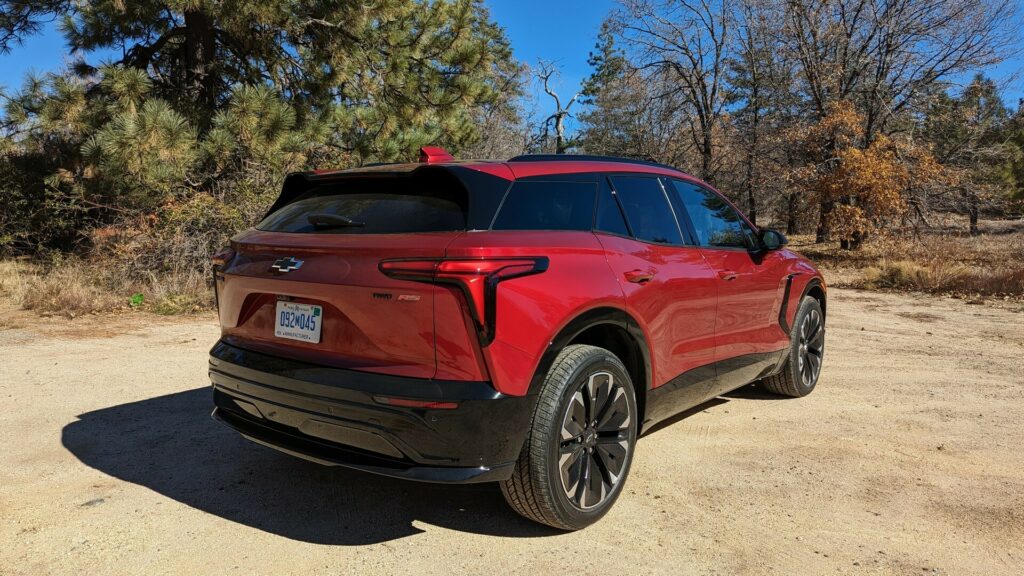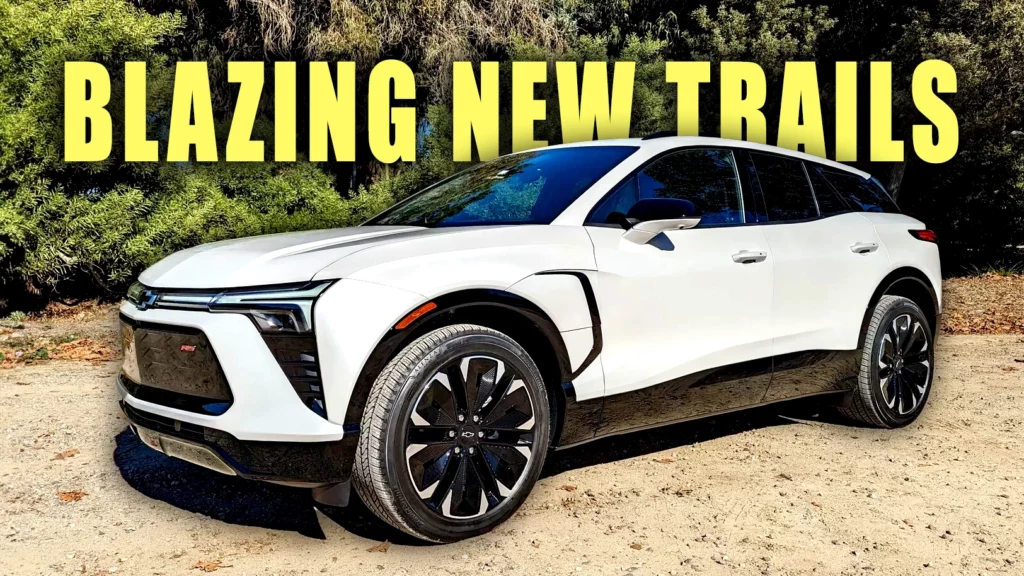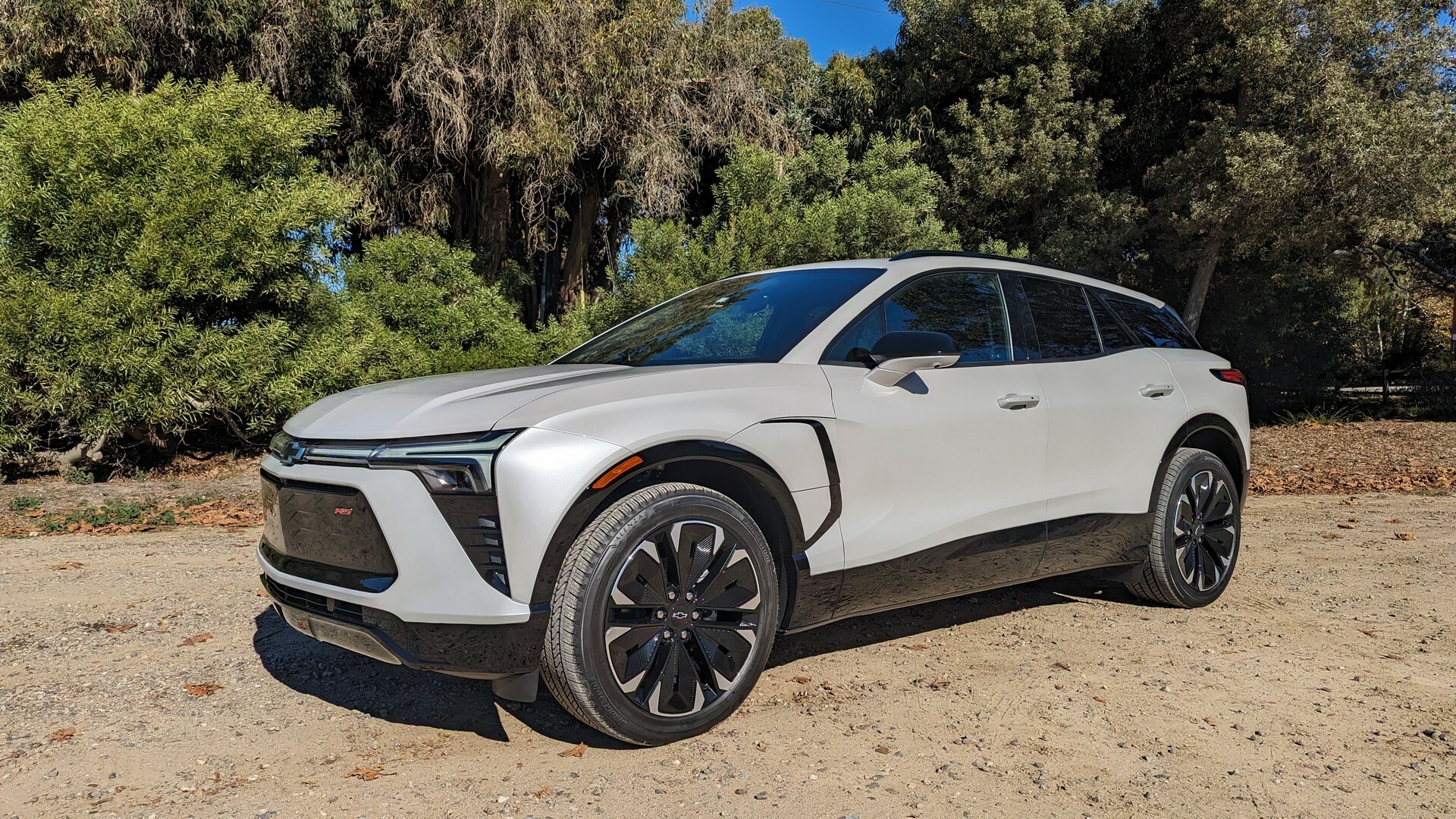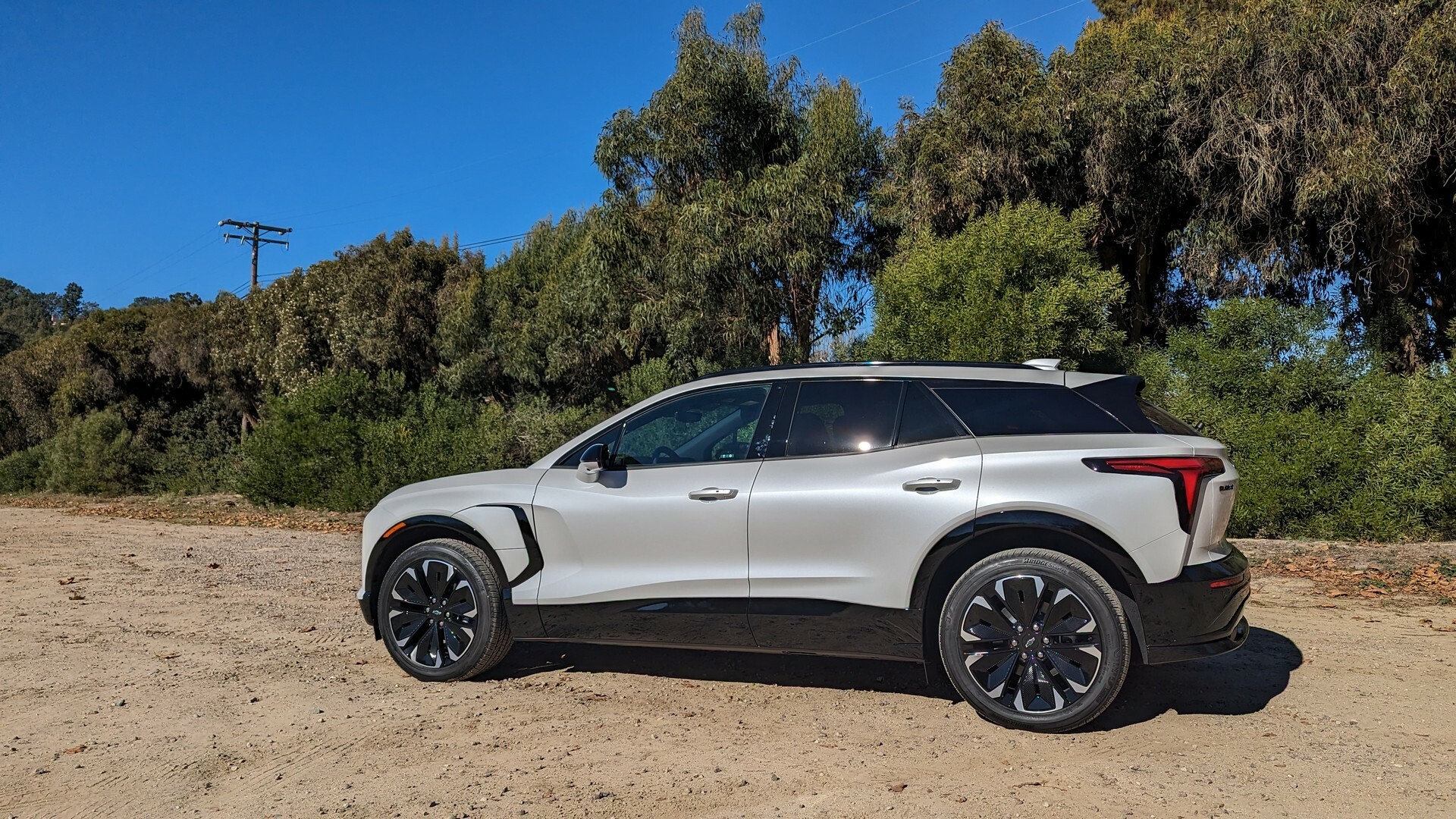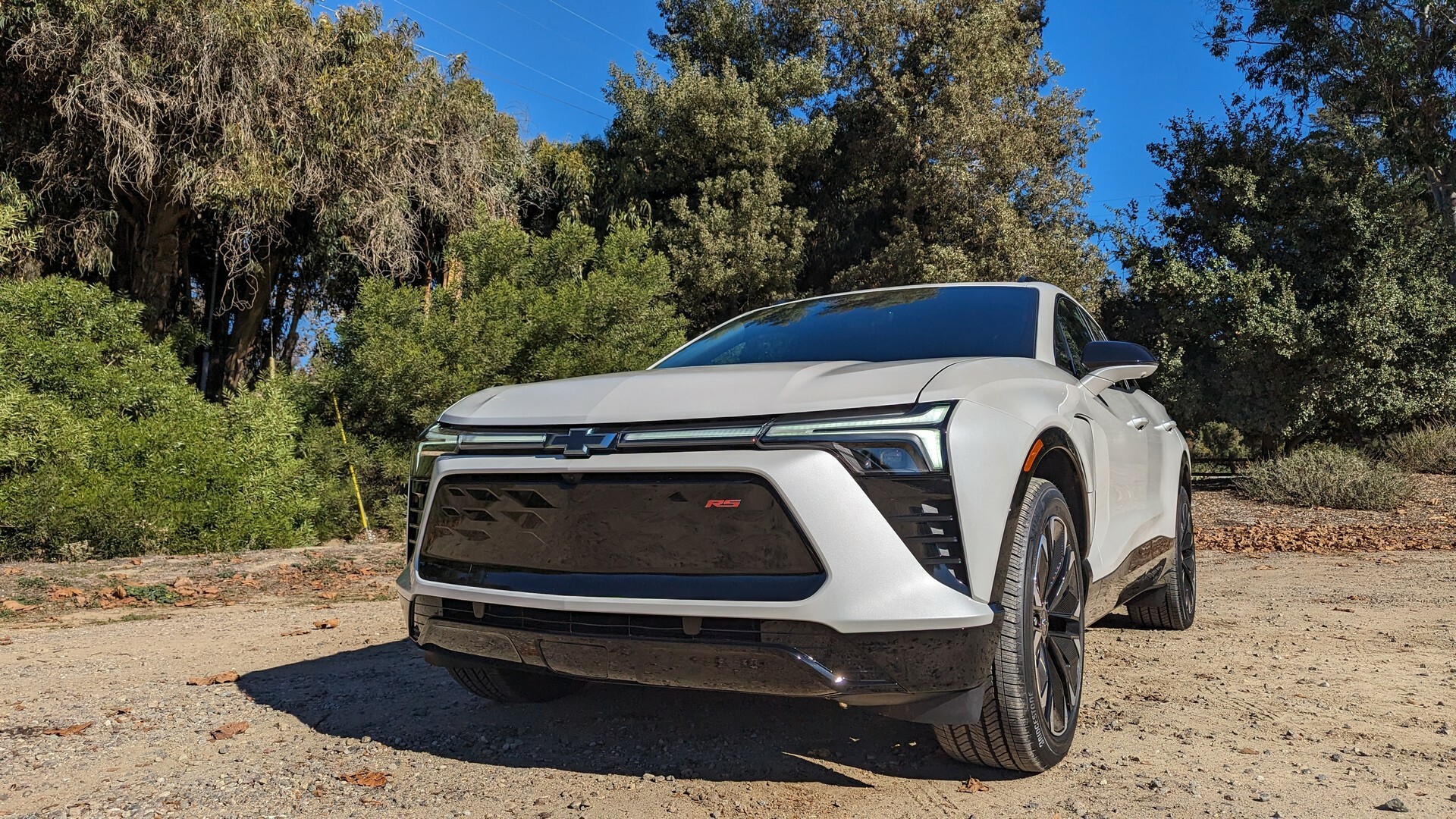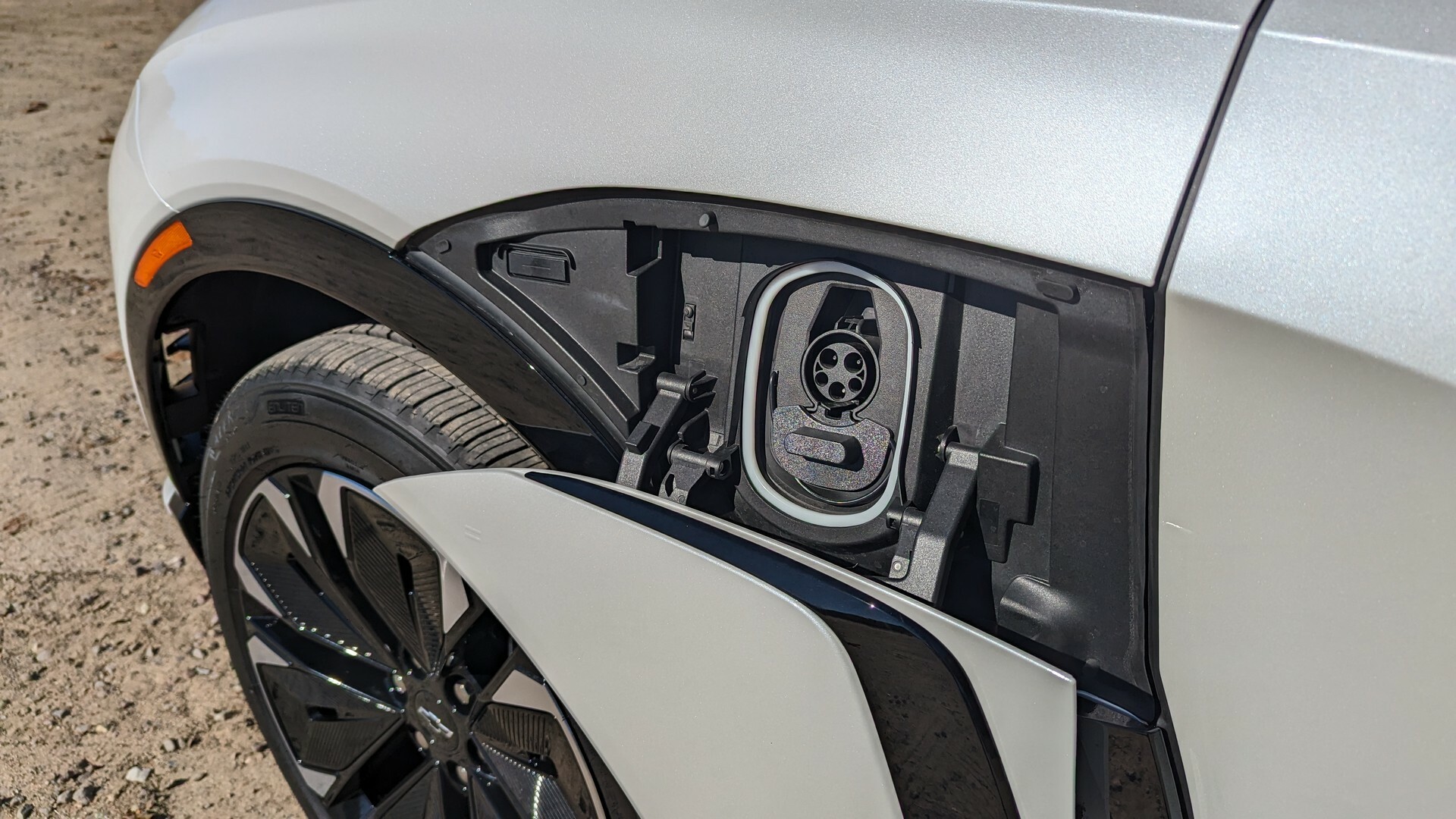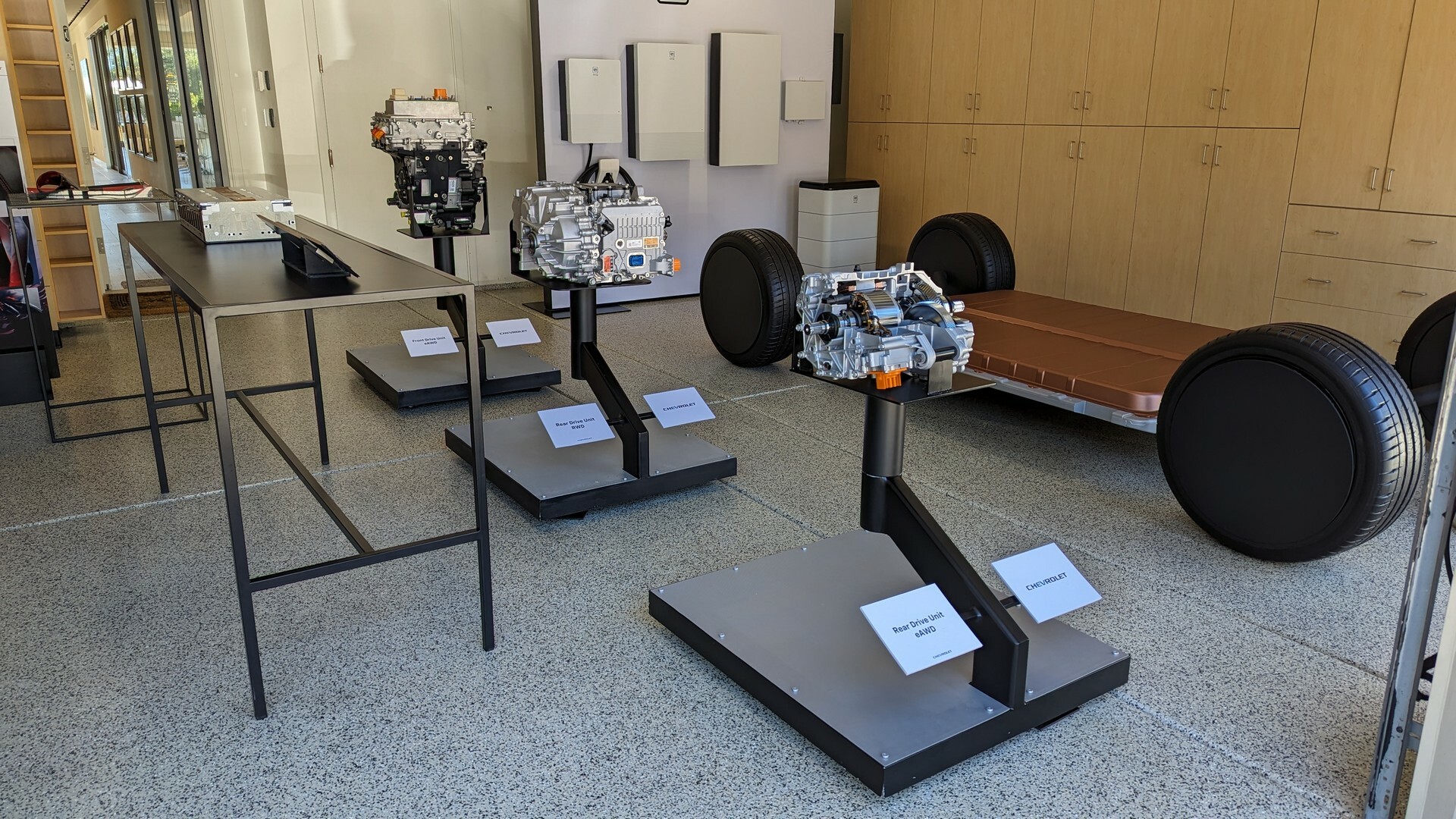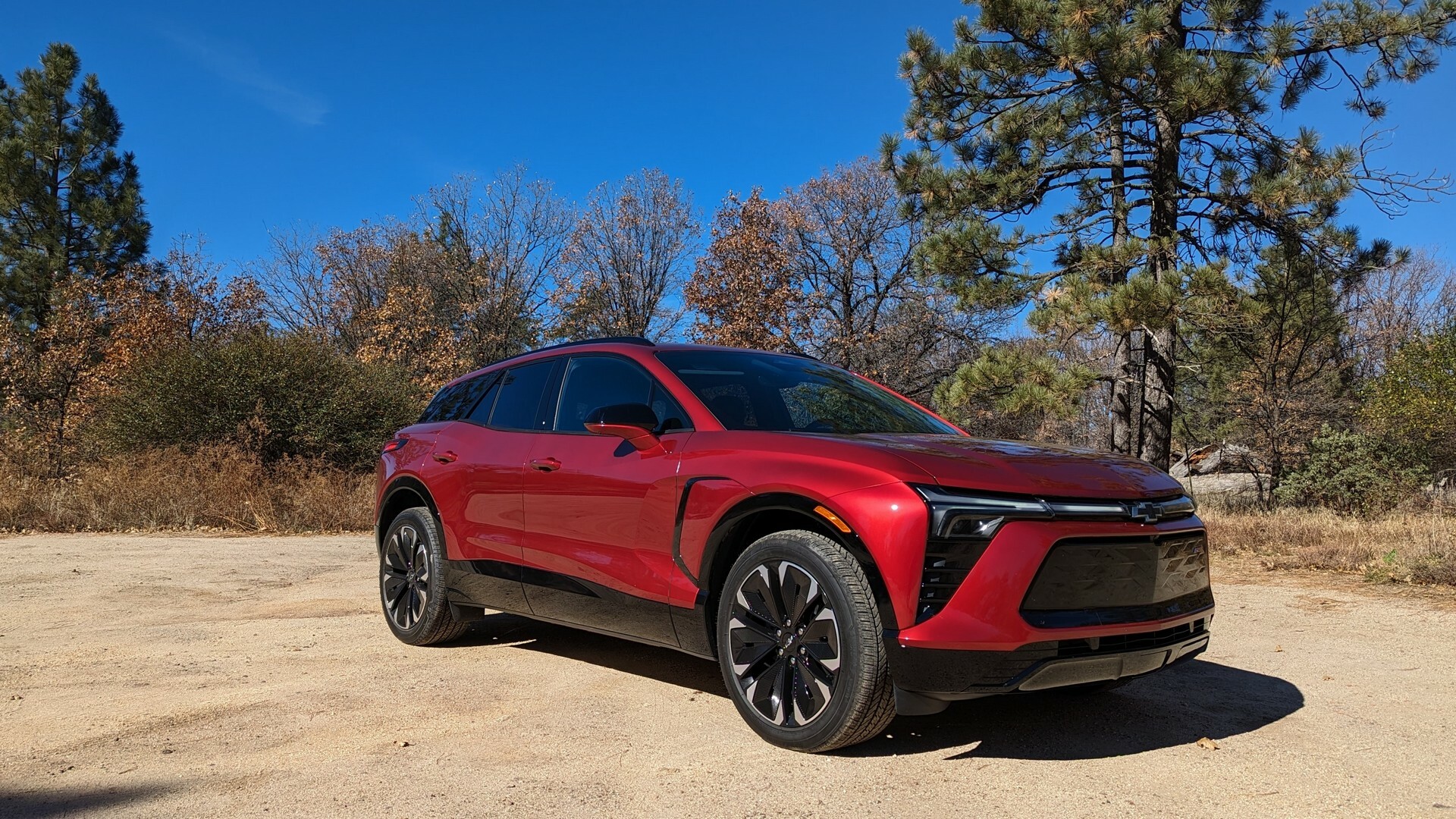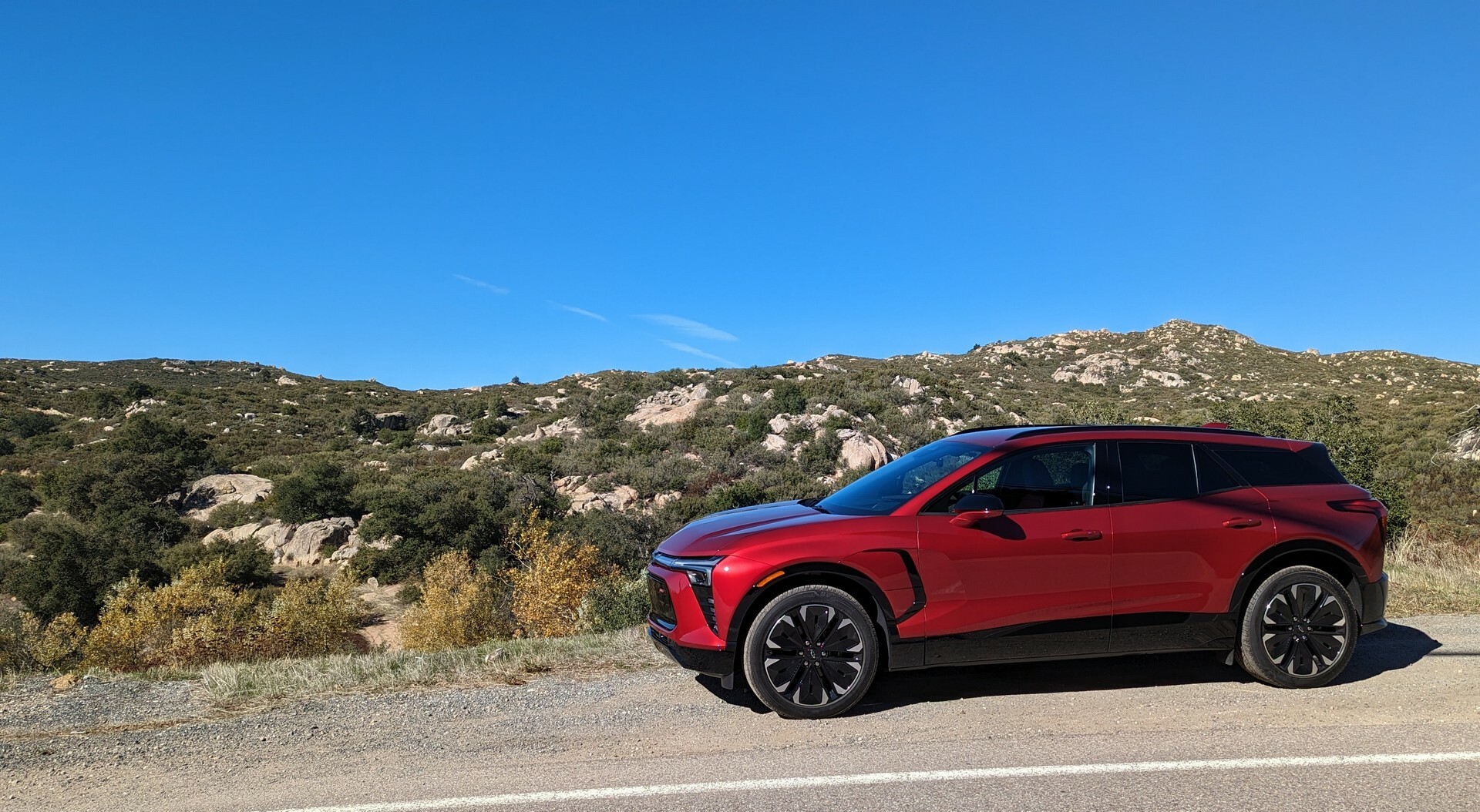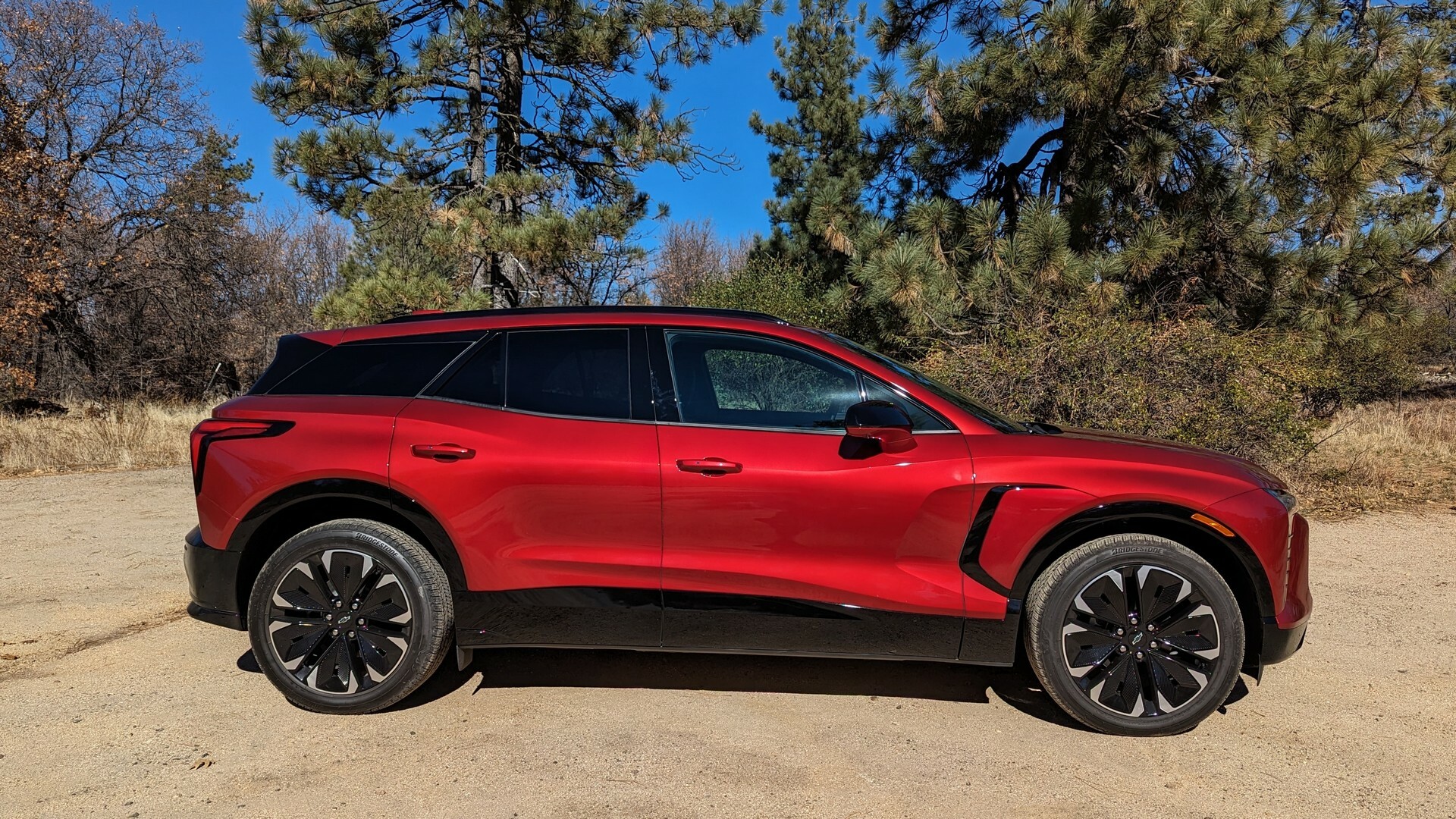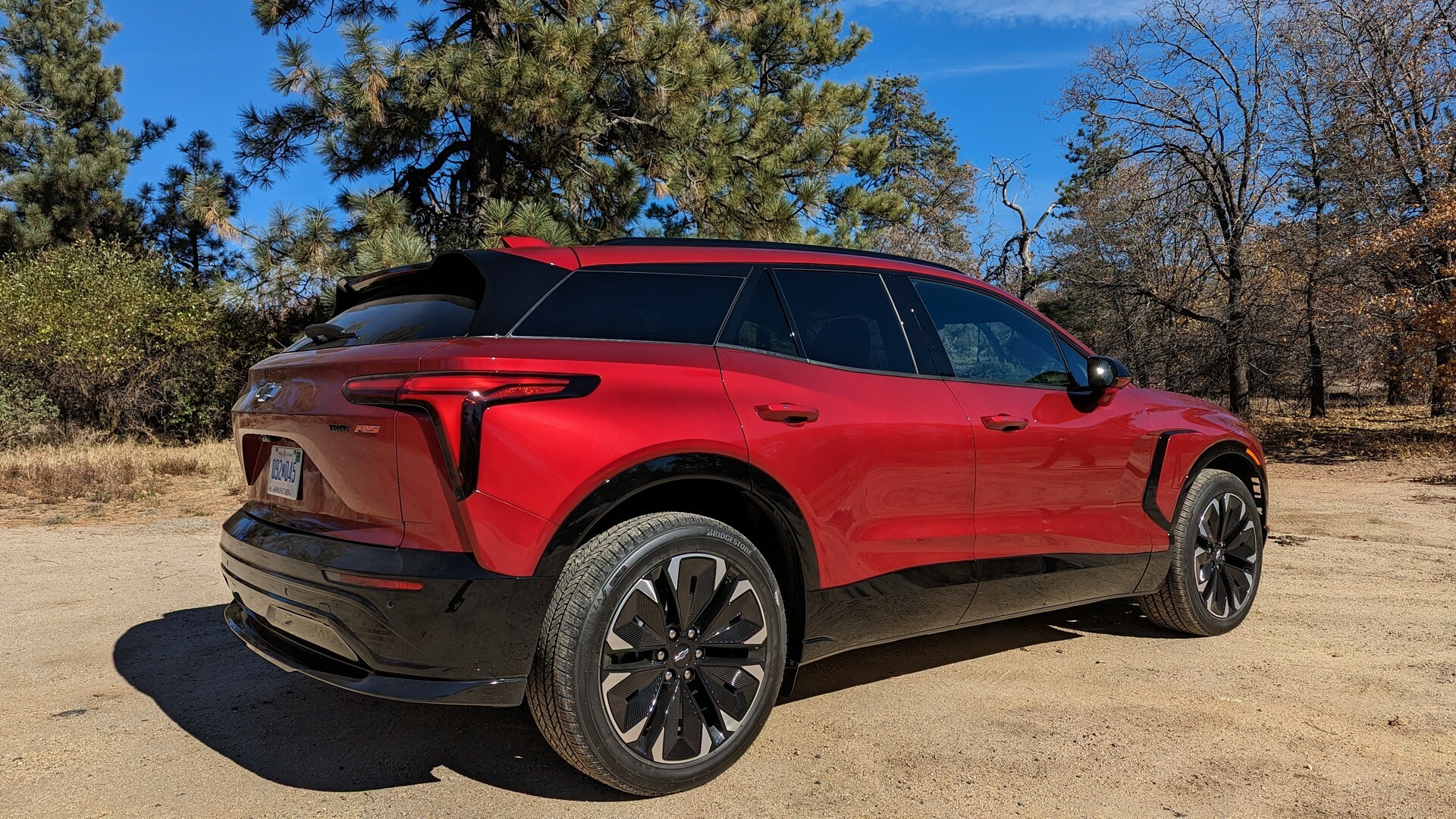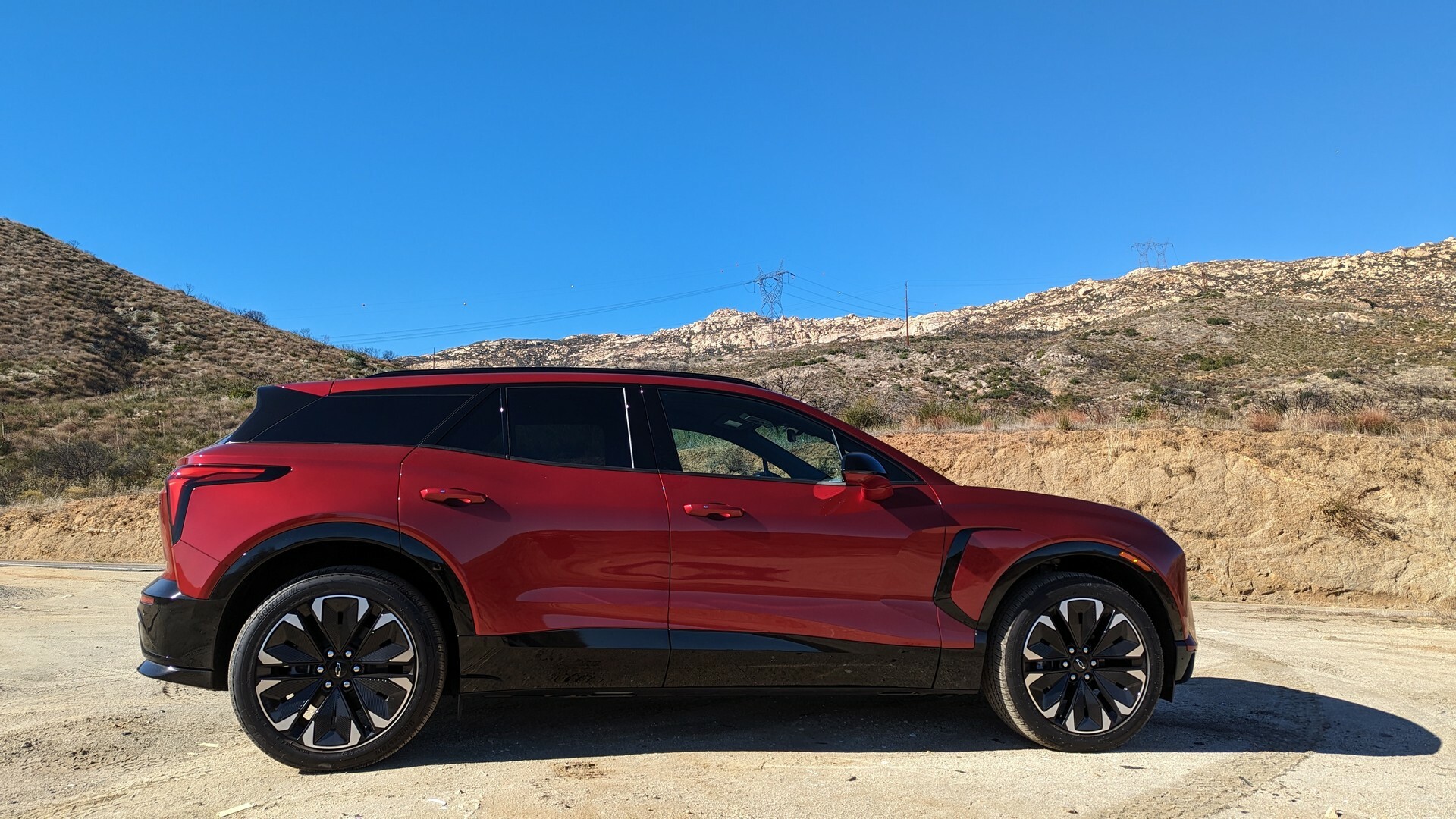The electric revolution has hit a few stumbling blocks, but the parade of new models continues. One of the latest is the Chevrolet Blazer EV and it’s designed to win over non-believers.
So what makes the model interesting? The company’s decision to avoid a one-size-fits-all approach. This results in a unique crossover that offers front-, rear-, and all-wheel drive as well as a performance variant and a range of up to 324 miles (521 km).
That’s just scratching the surface, but there’s a Blazer EV for everyone. On top of that, the model has mainstream appeal as it looks good, drives well, and doesn’t try to be different just for the sake of it.
FAST FACTS
An Electric Crossover That Actually Looks Like A Crossover
Blazer EV RS RWD
Electric vehicle design is all over the map as some are jellybeans, while others are hatchbacks masquerading as crossovers. The Blazer EV eschews both trends as it’s an electric crossover that actually looks like a crossover. That’s a refreshing development and one we can easily get behind.
The look varies by trim, but the entry-level LT has a monochromatic appearance with 19-inch alloy wheels. We drove the sportier-looking RS, which is distinguished by black accents and larger 21-inch wheels. Buyers will also find additional LED lights as well as choreographed lighting sequences when you approach or leave the vehicle.
While there are subtle styling differences between the three trims, all Blazer EVs have a fully enclosed grille and a rakish windscreen that flows into a sloping roof. They’re joined by curvaceous bodywork, a dynamic beltline, and a powered charging port door that opens with a push.
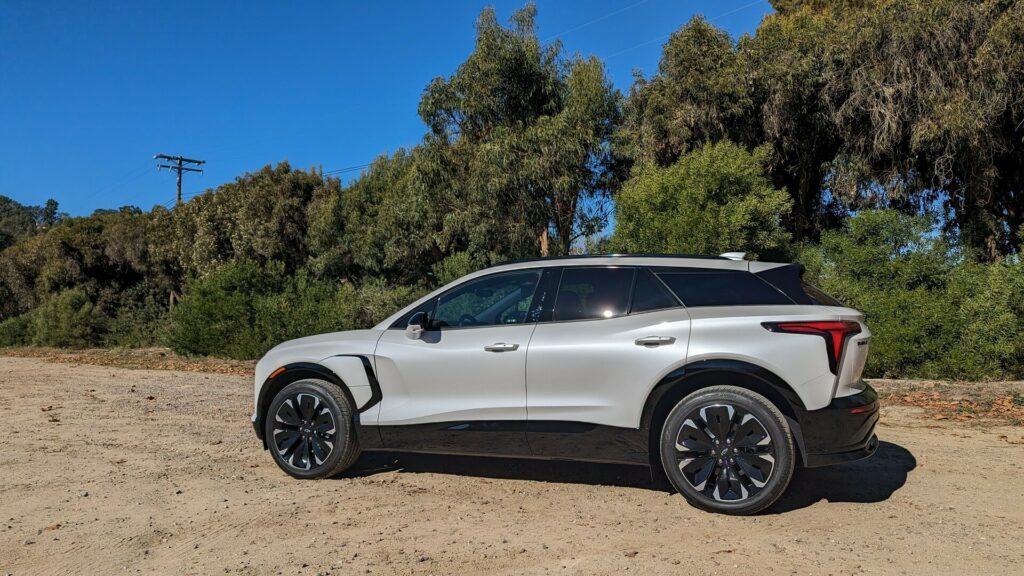
In terms of size, the crossover measures 192.2 inches (4,882 mm) long, 78 inches (1,981 mm) wide, and 65 inches (1,651 mm) tall with a wheelbase that spans 121.8 inches (3,094 mm). Besides being larger than its ICE-powered counterpart, the Blazer EV is 6.6 inches (168 mm) longer than the Ford Mustang Mach-E and has an extra 4.3 inches (109 mm) between the wheels.
It’s also worth mentioning the Blazer EV RS AWD has 7.9 inches (201 mm) of ground clearance, which is 2.1 inches (53 mm) more than the Mustang Mach-E and 1.8 inches (46 mm) more than the Kia EV6. This helps to explain why the model looks and feels like a proper crossover.
An Upscale And Spacious Interior
Blazer EV RS AWD
While some EVs try too hard to be different, Chevrolet wisely avoided this mistake as customers will find a modern and upscale interior. The results speak for themselves as the RS variant offers a stylish two-tone design with impressive attention to detail.
Drivers sit behind a flat-bottomed steering wheel and find themselves looking at an 11-inch digital instrument cluster with an assortment of displays. These range from relatively basic to a full map view.
To the right is a 17.7-inch infotainment system with Google built-in. It’s fairly intuitive and includes Google Maps, but several settings are buried including the drive mode selector. Even something as mundane as switching between seat heating and ventilation takes an extra step.
On the bright side, there are dedicated shortcuts for the headlights and the one-pedal driving mode. There are also a handful of physical controls for adjusting the climate control system and volume.
Putting displays aside, the cabin is notable for featuring metal accents, turbine-style air vents, and padded touchpoints. They’re joined by gloss black trim and nicely appointed door panels. While these elements aren’t remarkable by themselves, they combine to elevate the cabin and make it feel worthy of the price point.
The good news doesn’t end there as designers installed two deep storage compartments in the center console. They’re joined by a wireless smartphone charger, which has a grippy pattern that would feel at home in a Mercedes.
While the cabin looks great at first glance, you’ll be brought back to reality by mediocre plastics that populate the lower door panels and dashboard. The cargo compartment is also rather basic and you won’t find power-folding rear seats even as an option.
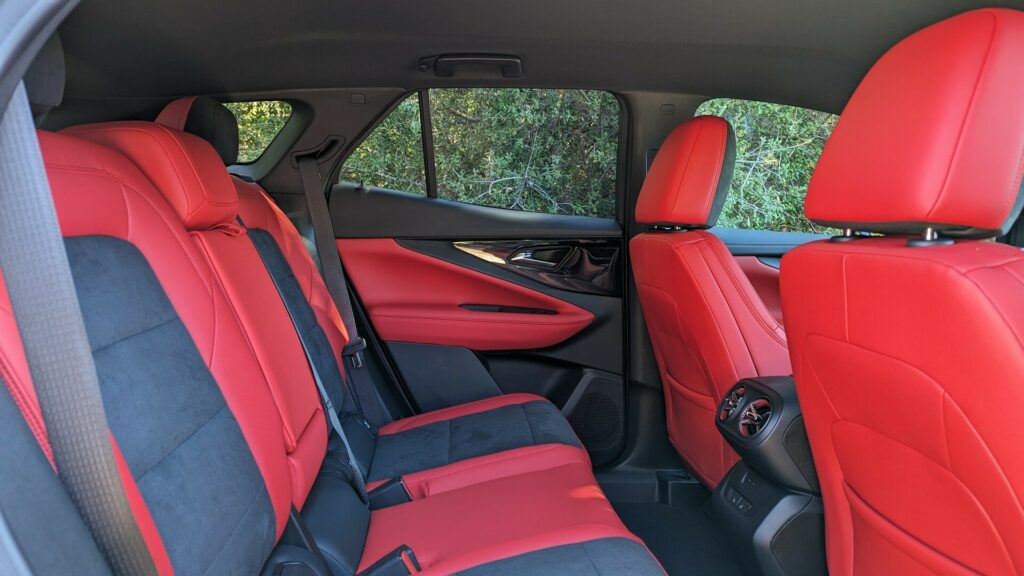
There’s plenty of room up front and the seats were perfectly comfortable on a trek up the Laguna mountain range. The crossover’s size also pays big dividends for rear-seat passengers as they’ll find 38.9 inches (988 mm) of legroom. That’s nearly an inch more than in the Mustang Mach-E and this 6′ 2″ scribe didn’t have any problem getting comfortable in the back.
Speaking of space, the crossover has a cargo capacity of 59.8 cubic feet (1,693 liters). That’s virtually identical to the electric pony car, but both trail the Tesla Model Y by a significant margin.
In terms of equipment, the LT2 AWD has heated front seats that are wrapped in a leather-like Evotex material. Other highlights include a heated leatherette steering wheel, a wireless smartphone charger, a power liftgate, and an auto-dimming rearview mirror. Buyers will also find automatic climate control, a six-speaker audio system, and passive entry.
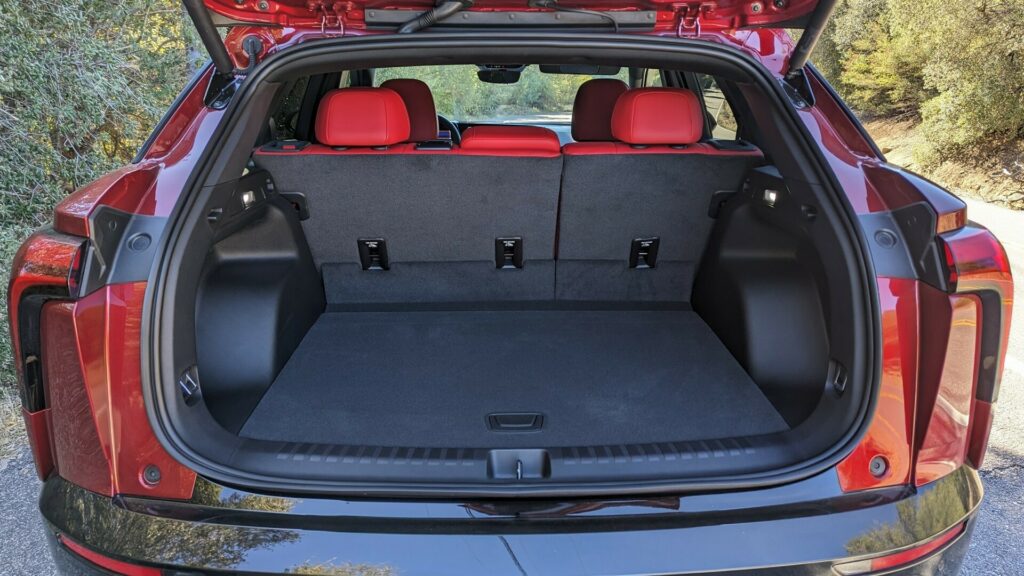
On the safety front, there’s a host of driver assistance systems including Adaptive Cruise Control, Automatic Emergency Braking, and Rear Cross Traffic Braking. The model also has IntelliBeam headlights, Blind Zone Steering Assist, and Lane Keep Assist with Lane Departure Warning.
The RS is similar but adds a head-up display, heated and ventilated front seats, heated rear seats, and an ambient lighting system. There are also additional safety features including a rear camera mirror and an HD Surround Vision system.
A Powertrain For Everyone
The Blazer EV lineup gets a little complicated, but we drove rear- and all-wheel drive variants.
The RS RWD costs $61,790 and has a 102 kWh battery pack, which provides an EPA-estimated range of 324 miles (521 km). The battery powers a rear-mounted motor producing 340 hp (254 kW / 345 PS) and 325 lb-ft (440 Nm) of torque. When it comes time to recharge, a 190 kW DC fast-charging capability enables the crossover to get approximately 78 miles (126 km) of range in as little as 10 minutes.
The $60,215 RS AWD has a dual-motor all-wheel drive system with 288 hp (215 kW / 292 PS) and 333 lb-ft (451 Nm) of torque. That isn’t the only change as the model has a smaller 85 kWh battery pack, which reduces the range to 279 miles (449 km) while also lowering the fast charging capability to 150 kW.
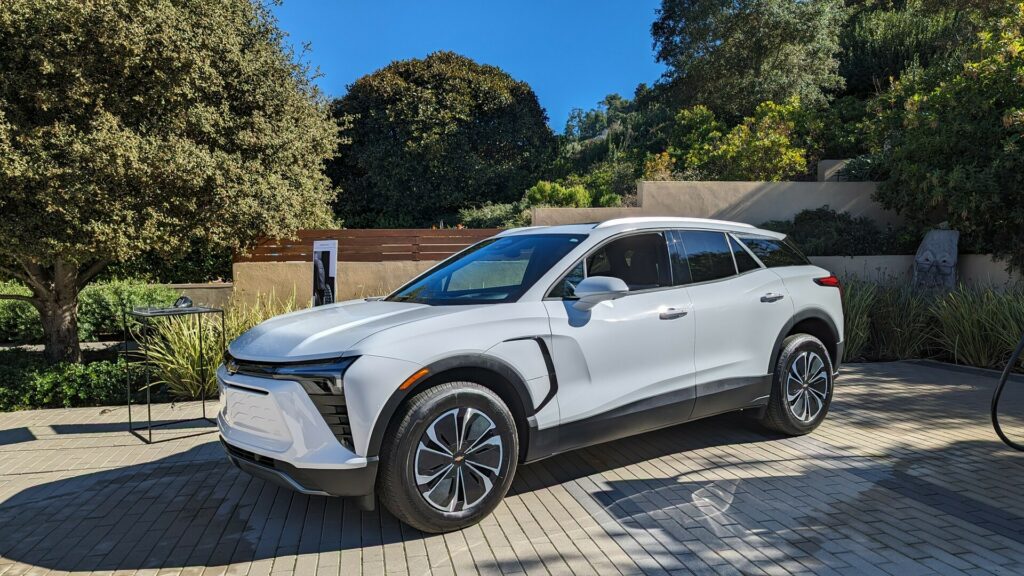
The same powertrain can be found in the 2LT AWD, which begins at $56,715. The trim will also be offered with front-wheel drive and we can expect to learn more about that version soon.
Speaking of future variants, the Blazer EV SS will arrive next spring to battle the Mustang Mach-E GT. It will come equipped with a sport-tuned suspension, Brembo brakes, and a 102 kWh battery pack.
More importantly, the crossover will have a dual-motor all-wheel-drive system developing 557 hp (415 kW / 565 PS) and 648 lb-ft (878 Nm) of torque. This will enable the model to accelerate from 0-60 mph (0-96 km/h) in less than four seconds when using Wide Open Watts (WOW) mode.
A Comfortable Crossover That Doesn’t Rock The Boat
Blazer EV RS AWD
The Blazer EV is designed to win over mainstream consumers, so it’s not surprising that the model drives like a traditional crossover.
The Ultium-based EV has an independent front and rear suspension, which is focused on comfort and easily handles minor road imperfections. While the crossover remained composed on twisty mountain roads, it weighs between 5,337-5,591 lbs (2,421-2,536 kg) and you’ll be reminded of that fact if you try pushing things a little too far.
Comfortable can be used to describe more than just the ride as the cabin is hushed aside from the hum of the electric motor(s). However, the pedestrian warning system is fairly loud and can become tiresome at low speeds.
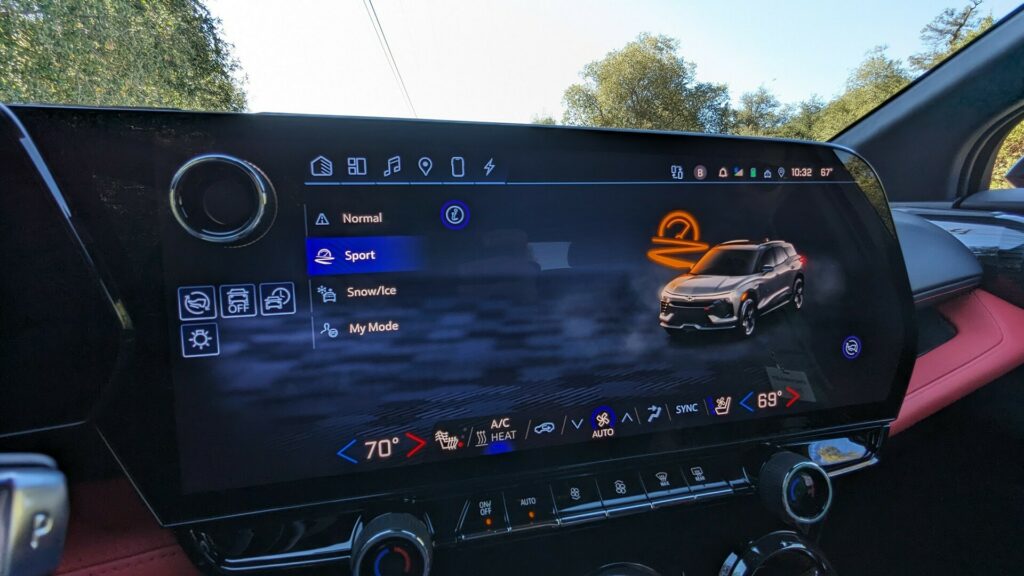
The driving experience can be fine-tuned by selecting between Normal, Sport, Snow/Ice, and My Mode. The differences are fairly pronounced as the steering is light in Normal mode whereas Sport mode adds some much-needed heft.
The most notable setting is My Mode, which enables drivers to select their preferences for acceleration, braking, and steering. They can also adjust the “motor sound,” and many drivers will likely want to turn it off altogether.
Speaking of things that aren’t for everyone, the Blazer has a one-pedal driving mode that begins to slow the vehicle as soon as you lift off the accelerator. Drivers will get used to it with time, but they can avoid it altogether.
On the topic of braking, there’s a Regen on Demand paddle on the left side of the steering wheel. You simply pull it back and the regenerative braking system springs into action to slow the vehicle.
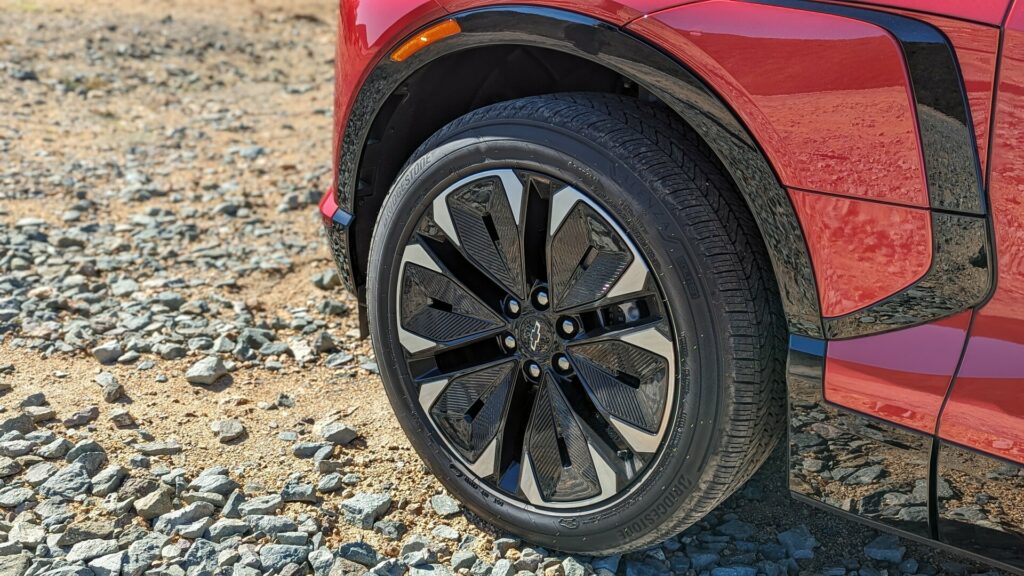
As for the brakes themselves, they had no problem dealing with the crossover’s substantial weight. They also seem to generate quite a bit of juice as we gained approximately 15 miles (24 km) of range coming down the mountain and that’s not even factoring in the distance traveled while doing it.
Unfortunately, it’s not all good news as the Blazer EV RS AWD has a towing capacity of 1,500 lbs (680 kg). That’s 2,000 lbs (907 kg) less than the Model Y and 800 lbs (363 kg) less than the Hyundai Ioniq 5.
Performance is so-so as neither variant is particularly fast or engaging. The experience in the all-wheel drive model is downright anticlimactic as it’s heavier and less powerful than the Mustang Mach-E.
The difference is rather stark as the electric pony car has an extra 58 hp (43 kW / 59 PS) and 95 lb-ft (129 Nm) of torque when equipped with Ford’s extended-range battery. That being said, the rear-wheel drive variant has more power than rivals from Ford, Hyundai, and Kia.
All of this adds up to a driving experience that is comfortable, quiet, and kind of dull. There’s nothing wrong with that, but I was hoping for something more engaging, especially after driving the Cadillac Lyriq last year.
A Crossover That’s More Than The Sum Of Its Parts
The Blazer EV isn’t perfect, but it looks good and has an upscale interior with plenty of space. Buyers will also find a massive 17.7-inch infotainment system that feels like a smartphone thanks to Google integration.
While performance is simply adequate, ranges of 279 and 324 miles (449 and 521 km) are impossible to ignore. Super Cruise is also coming soon and it will allow for hands-free operation on more than 400,000 miles (643,738 km) of road in the United States and Canada.
Pricing isn’t too shabby either when you consider the crossover qualifies for the $7,500 federal tax credit. This means you can get a well-equipped LT2 AWD for $49,215. If that’s too much, the Equinox EV will start at $34,995 before incentives.
All told, the Blazer EV is a well-rounded vehicle that scores plenty of hits but not many home runs. That might sound like faint praise, but it’s a winning combination and one that will make going electric easy for an often skeptical public.
